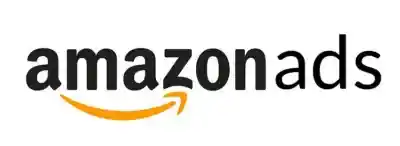Programmatic vs. Traditional Media Buying
Wondering whether to choose programmatic vs. non-programmatic advertising? This article breaks down the key differences between the two, offering insights into which approach is more effective based on your goals. We’ll explore the advantages, challenges, and best use cases of each method to help you make a confident, informed decision.
Key Takeaways
- Programmatic advertising automates ad buying through real-time bidding and advanced targeting capabilities, offering flexibility and efficiency over traditional methods.
- Traditional media buying relies on manual negotiations for ad placements, providing more control and fostering stronger relationships with media owners, but is often less adaptive compared to programmatic strategies.
- A blended approach that combines programmatic and direct ads can improve marketing outcomes by leveraging the strengths of both, allowing for broader reach and more targeted audience engagement.
Understanding Programmatic and Traditional Media Buying
Programmatic advertising is a digital system that automates the buying of ad space using sophisticated algorithms. It leverages real-time bidding (RTB), allowing advertisers to bid on available inventory through instantaneous auctions. This enables them to adjust campaigns based on performance analytics in real time, offering efficiency and responsiveness that traditional methods often lack.
At the core of programmatic advertising are demand-side platforms (DSPs) and supply-side platforms (SSPs), which streamline the transaction process. These platforms eliminate the need for direct negotiations with sales representatives, enhancing speed and scalability while maximizing impact.
In contrast, traditional (non-programmatic) media buying relies on manual, human-led processes. It involves direct negotiations with publishers to secure specific ad placements in predefined advertising space, typically in the form of fixed slots within a set inventory. This method often requires more time and effort compared to the automated nature of programmatic advertising and may lack the flexibility and real-time optimization capabilities that programmatic strategies offer.
Key Differences Between Programmatic and Traditional Media Buying
Programmatic advertising stands apart from traditional methods through its automation, use of advanced technologies, and access to real-time data for ad placements. In contrast, traditional media buying relies on direct interactions and manual negotiations between advertisers and publishers.
Buying Methods
Traditional advertising involves direct, manual negotiations with publishers where advertisers meticulously discuss rates, the volume of ads, specific targeting parameters, and how long campaigns will run. In these situations, advertisers collaborate closely with media proprietors to finalize ad placements, a process that is thorough but can be lengthy and allows for tailored deals and assured ad inventory.
Programmatic advertising, on the other hand, uses automated technology to streamline the media buying process. Through real-time bidding (RTB), advertisers can bid on digital ad space without prolonged discussions. Programmatic direct buying takes this a step further by offering fixed prices for selected ad slots, simplifying the transaction even more.
Automation not only accelerates media buying but also enhances efficiency and provides greater flexibility in securing ad space.
Targeting Options
Programmatic advertising is known for its advanced targeting capabilities, allowing advertisers to segment audiences based on behavior, demographics, and interests. The integration of mobile data, data management platforms (DMPs), and vast user data improves targeting precision significantly. This enables advertisers to deliver highly personalized messages to specific audiences at the most effective times.
In comparison, traditional media buying typically relies on broader audience profiles and historical data, offering less refined targeting.
However, with growing privacy regulations restricting the use of personal data, contextual targeting has become more relevant in traditional media. By placing ads alongside content related to specific topics or themes, advertisers can still reach engaged audiences without relying on personal data, making traditional approaches adaptable despite new privacy limitations.
Ad Placements
Programmatic advertising offers extensive flexibility in ad placement, allowing ads to appear across a wide range of digital platforms, such as connected TV, display networks, and social media. This broad reach enables advertisers to connect with diverse audiences and optimize campaigns in real time based on performance metrics, resulting in a more dynamic and responsive strategy.
Traditional media buying, by contrast, typically involves fixed ad placements that provide consistent visibility in specific locations. While less flexible, this approach offers greater control over where ads appear, which can be beneficial for campaigns requiring precise timing or placement.
Advantages of Programmatic Advertising
Programmatic advertising streamlines the ad buying process by automating tasks that were traditionally handled manually, greatly improving efficiency. Automation enables faster transactions and allows real-time adjustments based on performance analytics, helping optimize campaigns while they’re still active.
It also offers advanced targeting capabilities, allowing advertisers to segment audiences based on user behavior, location, device type, and more. This precision leads to more relevant messaging and improved campaign outcomes.
Additionally, programmatic advertising provides scalability and flexible budgeting options, making it easy to adjust spending according to campaign needs. This flexibility supports better resource allocation and maximizes return on investment (ROI).
By combining automation, real-time data analysis, and powerful targeting features, programmatic advertising has become an essential tool for modern marketers.
Advantages of Traditional Media Buying
Traditional (non-programmatic) media buying allows for highly customized advertising solutions, including large-format ads and sponsorships designed to capture attention. Direct negotiations with publishers enable advertisers to craft placements tailored to their specific goals, often resulting in high-impact campaigns.
This method also fosters strong relationships with media partners. Building trust and collaboration through personal interaction can lead to better support, favorable terms, and enhanced campaign execution.
Local businesses, in particular, benefit from traditional methods. Offline tactics like billboards and flyers increase visibility in specific geographic areas and can be tailored to resonate with local audiences, boosting community engagement and loyalty.
When to Use Programmatic vs Traditional Media Buying
Programmatic advertising is ideal when campaigns require immediate execution, broad reach, or scalability. It’s especially effective for targeting niche audiences and tracking conversions in real time. It also allows advertisers to serve ads to users engaging with competitor content, offering a competitive edge.
In contrast, direct media buying stands out when precise geographic targeting is paramount or when advertisers seek greater control over their ads’ creative elements. Opting for this traditional form of advertising helps with fixed price agreements conducive to budget planning while offering more transparent insights into campaign performance via direct interactions alongside programmatic methodologies.
Combining Programmatic and Traditional Media Buying Strategies
Blending programmatic and traditional advertising methods can create a well-rounded marketing strategy that leverages the strengths of both. By combining automated, data-driven targeting with direct ad placements, advertisers can reach highly specific audience segments while also achieving broad visibility, maximizing campaign effectiveness.
Using multiple channels through programmatic advertising allows brands to expand their reach and target niche demographics, boosting brand awareness and customer engagement. This hybrid strategy brings both variety and stability to ad campaigns, ensuring consistent performance across different platforms.
To build a successful integrated marketing strategy, it’s essential to understand the key differences in buying methods, targeting capabilities, and ad placement options. Recognizing these distinctions helps marketers choose the right mix of tactics and allocate resources effectively, resulting in more focused and effective campaigns.
Common Challenges and How to Overcome Them
Ad fraud is a major challenge in both programmatic and online advertising. To combat this, advertisers should implement robust verification systems and partner with trusted vendors.
Brand reputation can also be at risk with automated ad placements, potentially appearing alongside inappropriate content. Using high-quality inventory and brand safety tools can help mitigate this.
A lack of understanding of programmatic technology can lead to inefficiencies, such as wasted ad spend or poor targeting. Without proper knowledge, teams may struggle to optimize campaigns effectively. Offering proper training equips teams with the skills to use programmatic platforms efficiently, ensuring better decision-making, improved performance, and more effective ad campaigns.
Securing premium ad inventory can be challenging. However, developing strong relationships with publishers ensures access to high-quality placements, improving ad campaign effectiveness, and maximizing ROI.
Future Trends in Digital Advertising
Technological advancements, particularly in artificial intelligence (AI), are transforming the digital advertising landscape. AI is set to revolutionize marketing strategies by enabling more precise targeting and allowing real-time adjustments to campaigns. This shift enhances both the effectiveness and efficiency of ads by providing deeper insights into consumer behaviors and preferences.
New performance metrics, focusing on attention rather than just click-through rates, are gaining prominence. This shift emphasizes genuine user engagement with ads, moving away from simply measuring impressions.
As these trends evolve, advertising strategies will become more consumer-centric, driven by advanced AI tools and innovative methods for evaluating campaign success.
Summary
Understanding the differences between programmatic and traditional media buying is essential for building effective advertising strategies. Programmatic ads bring speed, precision, and real-time optimization, making them ideal for reaching specific audiences with data-driven efficiency. On the other hand, traditional methods allow for personalized placements and closer collaboration with media partners, offering control and creative flexibility.
By blending direct and programmatic ads, marketers can combine the targeted reach of automation with the impact and customization of direct placements. This balanced approach not only broadens audience engagement but also strengthens overall campaign performance. Embracing this dual strategy while staying informed about emerging digital trends empowers advertisers to deliver smarter, more adaptable campaigns.











